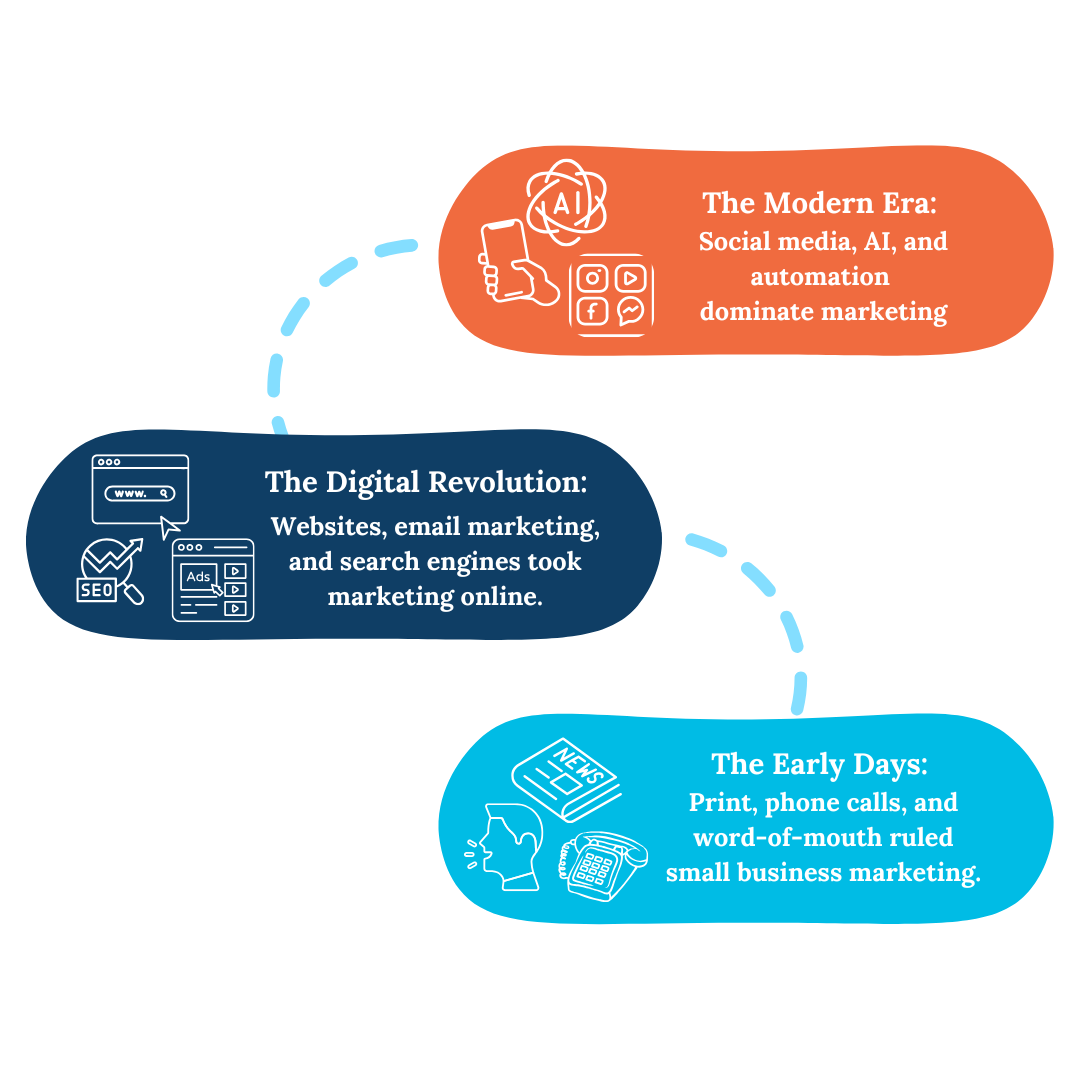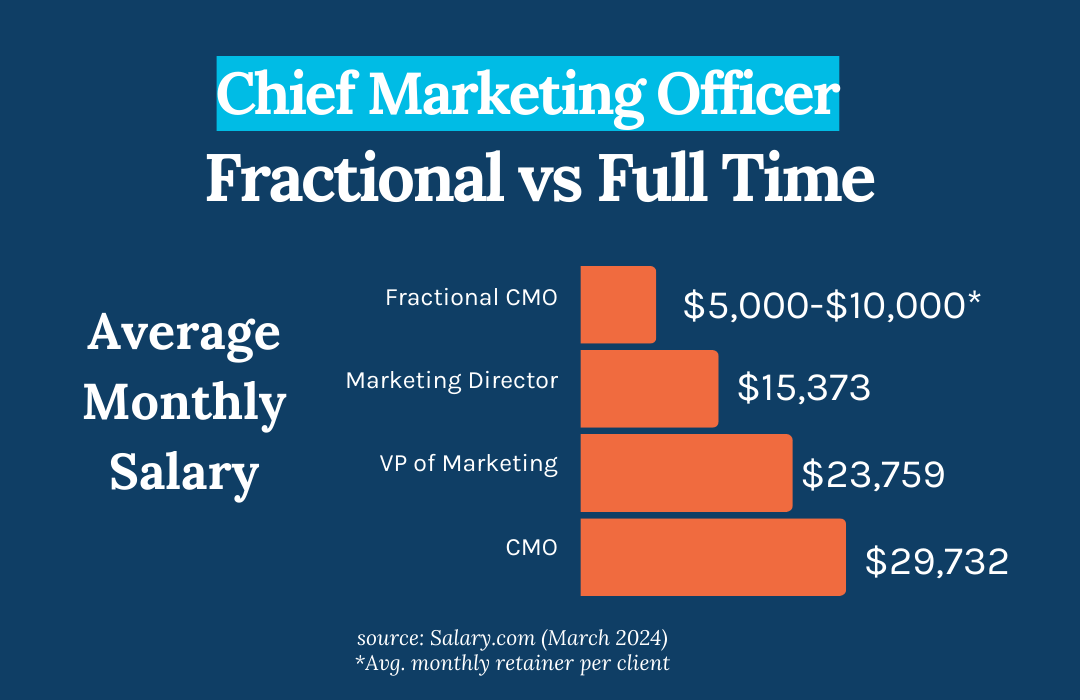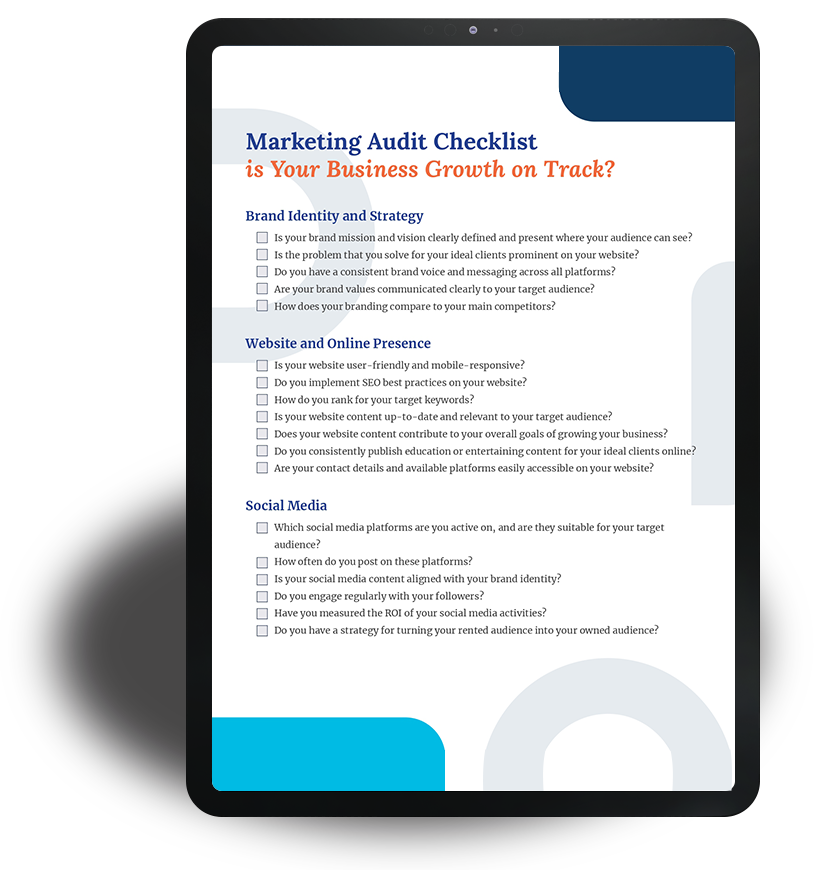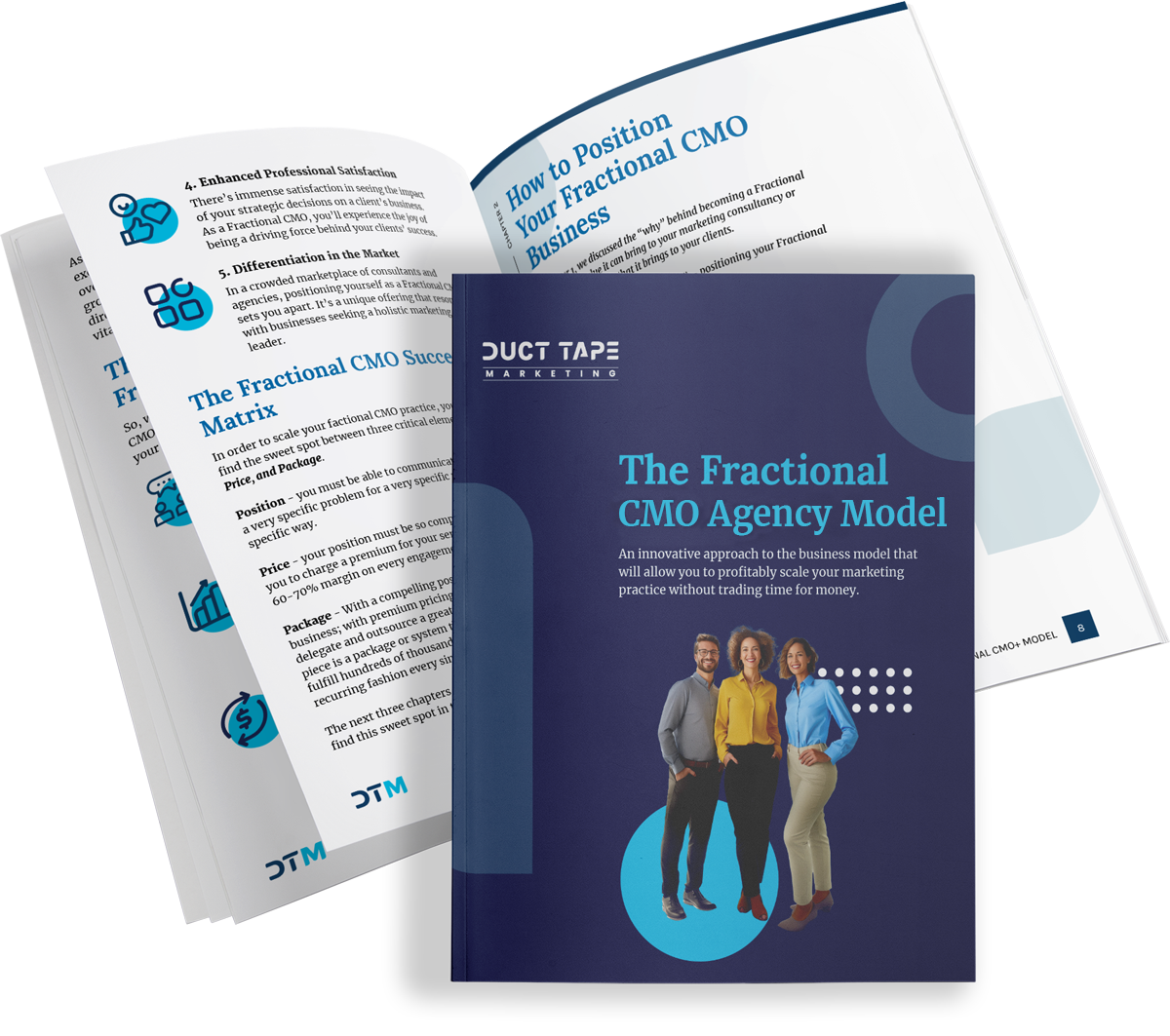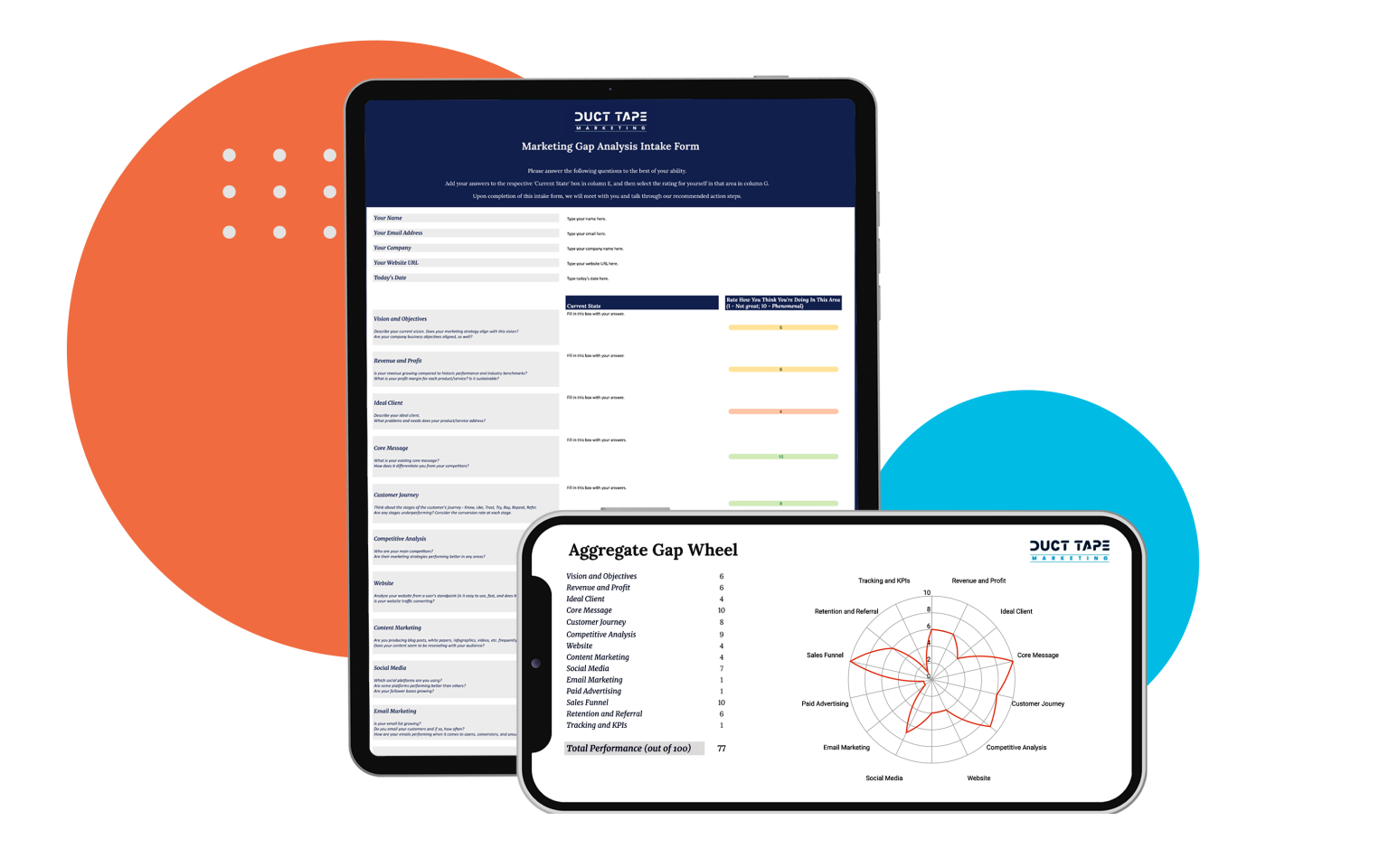10 Questions Small Business Owners Should Ask Before Hiring a Marketing Agency written by John Jantsch read more at Duct Tape Marketing
Listen to the full episode:
Overview
About the Host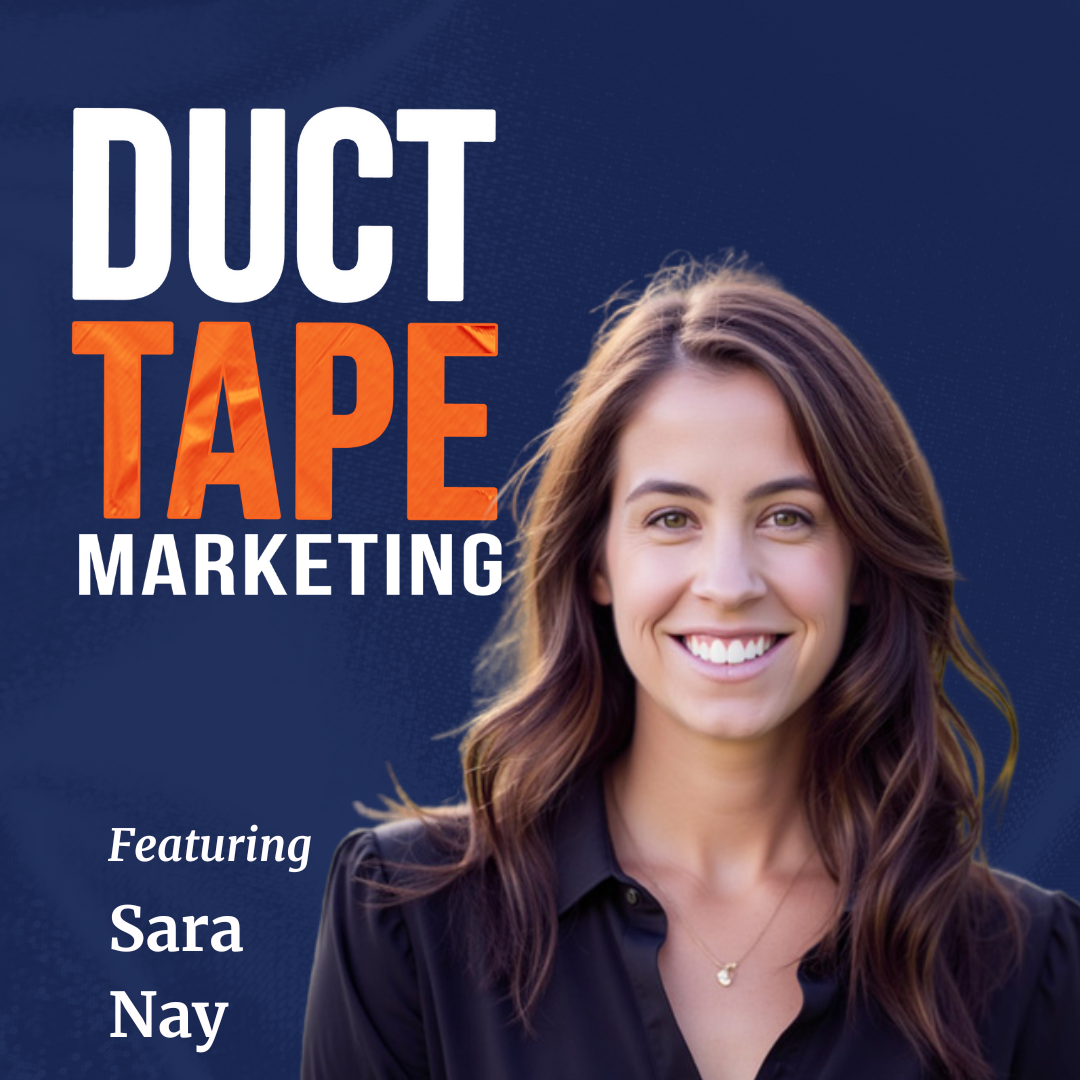
Sara Nay is CEO of Duct Tape Marketing, host of the Agency Spark Podcast, and author of “Unchain: Breaking Free from Broken Marketing Models.” She helps small businesses and agencies build ownership, transparency, and strategic clarity into every marketing engagement.
- LinkedIn: Sara Nay
- Book: Unchained: Breaking Free from Broken Marketing Models
- Duct Tape Marketing: ducttapemarketing.com
Actionable Insights
- Small business owners are too often locked into expensive, long-term marketing contracts—with little clarity on results or account ownership.
- Always ask: Who owns my marketing assets and accounts? (Spoiler: It should be you, not the agency.)
- Demand transparency in reporting, regular reviews, and ongoing education—don’t settle for reports you don’t understand.
- Insist on strategy before tactics; don’t hire a vendor who just wants to “do SEO” or “run ads” without understanding your business.
- Avoid long-term contracts and “handcuff” clauses; month-to-month and clear exit paths are healthiest for all sides.
- Meet the real team you’ll work with—not just a charismatic salesperson. Ask to speak with the actual day-to-day contacts.
- Ask how agencies use AI and what remains human-led; look for “AI + human” answers, not “AI instead of human.”
- Ensure your team stays informed and involved; agencies should empower, not gatekeep.
- Ask for a sample report, a clear plan for strategy, and specific examples of what the agency will teach you along the way.
- The best agencies leave you better educated, more empowered, and with true ownership—never dependent or in the dark.
Great Moments (with Timestamps)
- 00:01 – Why Small Businesses Get Stuck with Bad Agencies
Real-life stories of businesses trapped by contracts, lost assets, and confusing reports. - 04:16 – The 10 Essential Questions to Ask Before Hiring an Agency
Sara’s practical checklist for choosing the right partners. - 06:45 – You Must Own Your Assets
Why account ownership is non-negotiable for small businesses. - 08:42 – Strategy Before Tactics (Always!)
How to connect tactics to your bigger business goals and avoid wasted spend. - 10:53 – The Danger of Long-Term Contracts
Why month-to-month is the gold standard in today’s marketing landscape. - 13:20 – AI, Human Touch, and the Future of Agency Work
What to look for in agencies navigating the new marketing tech landscape. - 15:38 – Involvement, Education, and True Collaboration
How agencies should keep you informed, empowered, and ready to grow.
Insights
“You should always own your website, accounts, and assets—never let an agency hold them hostage.”
“Great agencies start with strategy, not just tactics—they want to understand your business, not just sell you what’s in their toolkit.”
“Transparency, collaboration, and education are non-negotiables—if you’re not getting them, find a better partner.”
“Marketing is complicated, but you shouldn’t be kept in the dark. The best agencies leave you smarter, more empowered, and in control.”
Sara Nay (00:01.218)
Hello and welcome to another episode of the Duck Tape Marketing Podcast. This is your host, Sara Nay, taking over for John Jantsch today as host and also doing my first ever solo podcast because I am fired up about a specific topic right now.
So to give you a little bit of backstory, about a week ago on LinkedIn, I posted a couple stories of conversations that I had had with small business owners recently. And I led the post saying that I am sad and mad and fired up all at the same time. And so the conversations I had with two separate business owners, the first one was with a small business owner who has been paying an SEO company $8,000 a month and is locked into
three-year contract with him. On top of that, he had no idea if he was getting any results from the efforts and he didn’t know how to get out of the contract because he signed this three-year commitment.
Another story that I told on LinkedIn was another conversation I had with a different business owner, and he has been paying $10,000 a month for Google Ads to an agency. But the issue is the agency owns the Google Ads account, and on top of that, he doesn’t have access to it, and he has no idea how much of the money that he’s paying every month is going towards the agency’s management fees or the actual ads.
In both of these scenarios, the business owners were receiving reports from the agencies every month. They had no idea what the reports actually mean. It looked like foreign language to them. And so they’re spending money on marketing. They’re not really getting a return and they’re locked into these situations, both a bit stuck. The SEO scenario, he’s stuck because he signed a three year contract. The Google ads scenario, he’s stuck because this agency owns
Sara Nay (02:00.457)
his ads accounts. And so these stories fire me up. I’ve been speaking with, interacting with small businesses for about 16 years at Duct Tape Marketing and I wish that these were unique stories but unfortunately I hear things like this all of the time. And I think it comes from two different areas. think there’s, marketing is hard, it’s complex. A lot of people get into business because they’re passionate about something or they see an opportunity and all of sudden they need to start
understanding and learning marketing because that’s how you spread the word about your business. And so there’s a lot of people in the small business space as business owners that haven’t been properly educated about marketing and so they don’t really understand how to go about or purchase marketing from partners that are out there.
There’s also unfortunately some agencies that I believe take advantage of small business owners. I actually wrote a whole book on the topic. It’s called Unchained Breaking Free from Broken Marketing Models. We’ll add a link to the show notes. But I believe the best path forward for small businesses is the path where they’re owning their marketing and they’re collaborating with partners to actually get the work done moving forward. So as I said, fired up on this topic, I’m here to educate small
small businesses on how to ask the right questions when it comes to hiring an agency or a fractional CMO or a consultant. And I’m also here, if you’re an agency fractional CMO or consultant listening to this episode as well, I encourage you to write down these list of questions and answer them honestly to see where you stand on these items. Because I believe again, the best path forward is transparency and collaboration, working together, empowering small businesses.
versus keeping what we do behind the scenes in secret. And so with all of that being said, I wanna dive in as a follow up to my initial LinkedIn post, I did a second post that was essentially 10 questions to ask as part of the sales process to the agency that you’re considering hiring. And so these questions are very focused on understanding the type of partnership you’re getting into. And so I wanna make that very clear. There are other questions you should ask
Sara Nay (04:16.377)
top of this except like such as their work experience and speaking to referrals and reading different case studies and all of that stuff this these ten questions are very focused on understanding the partnership that you’re getting into so if you’re a small business listening to this write these down the next time you’re considering hiring an agency a consultant a fractional CMO a contractor a freelancer ask these questions so you’re better prepared to Understand what the relationship will look like moving forward so the first question and in some cases
I would argue is the most important is who owns the market my marketing assets and accounts and so this one is very important because I’ve heard so many stories over the years of marketing agencies owning the accounts on behalf of their clients and so they’re building these assets that their client is basically handcuffed to this agency moving forward and so the scenario I said in the opening with the example of the person spending $10,000 a month
Google ads, the agency owned the account. And so when they parted ways, the small business basically lost their Google ads setup because they had to start from scratch over again. So that’s one scenario. Another scenario I hear very often, unfortunately, is a agency basically builds a website for the client and they own the website, the URL, hosting, all of the things. And so now all of sudden the small business is tied to this agency until they
part ways and then they essentially have to rebuild this website from scratch when I would argue a website in a lot of cases is one of the most important assets when it comes to small business marketing. And so you absolutely should be asking this question when you’re considering working with an agency or outsourced solution. It’s who’s going to own the accounts and their answer should be you. You small business owner will own the accounts and we will give you, or you can give
us access to the accounts as managers or whatever the setup would be and then when we part ways you kick us out and you continue to own this asset that we would have spent all of this time building together. So that should always be the answer I believe is you should own your website, you should own your paid accounts, you should own technology and tools, AI platforms that people are bringing in. Like you should be the owner as the small business and the agency should be granted access to your account.
Sara Nay (06:45.903)
so you can kick them out when you part ways. Another question, number two on the list is how will you measure success and how often will we review it? And so again, in the opening, I shared those two stories of the person paying for SEO services and the other one paying for Google Ads. They were getting a report that looked like foreign language every single month and they have no idea what it means. And so that doesn’t help anyone, ultimately.
And so when you’re asking an agency that you’re considering to work with, how will you measure success and how often will we review it? You wanna see that they’re measuring success for certain things on a daily basis, some on a weekly basis, some on a monthly basis. Maybe they’re diving into certain metrics on a quarterly basis. It really just depends on what all you’re tracking in terms of the cadence. But you wanna…
have an agency that you’re working with that has a clear plan for measuring what they’re going to measure, how they’re going to measure it, how they’re going to report on it, how they’re going to analyze it, how they’re going to use it to drive their decisions. And then how often will we review it is really important as well because I’ve heard so many stories about companies just sending this report that they don’t understand and that’s all the reporting that they get. I believe that you should be speaking with your agency or your fractional CMO or whoever you’re outsourcing or delegating or working
with for marketing, you should be meeting with them on a regular basis to talk through the specific metrics that you agree to track together. And then you should be using those metrics to then guide your quarterly marketing planning moving forward. And so it’s really important to determine what to measure, how it’s going to measure, agree on a communication cadence, and then look to the agency to be educating you on what the metrics mean and why they’re important and how they’re deriving decisions moving forward.
Thank
Sara Nay (08:42.165)
Question number three, how do you connect tactics to strategy? So I actually was just speaking to a new client of ours and he told me yesterday that he believes he’s wasted about $100,000 on bringing in marketers to execute on tactics. And the reason he believed none of that was successful was because he didn’t have a proper strategy in place. And so I absolutely agree with him in that scenario. There have been so many stories.
that I’ve heard over the years where someone will pitch, you need email marketing, or you need paid advertising, or you need SEO work, because that’s what we know. And so they’ll bring in an agency to do just those things, but the agency hasn’t taken the time to learn the business or what they’re trying to accomplish or where they’re trying to go or who their ideal clients are or what message resonates with them. And so they’re skipping through all of that because they’re staying in their lane of tactics that they’re comfortable with without understanding
understanding what the overall strategy is for the specific business and why that specific tactic will help reach their goal. So if you’ve been following along with Duct Tape Marketing, we’ve been saying strategy before tactics for as long as we’ve been in business. And so this one really is very, very important to me. Okay, number four. What happens if I want to end the contract?
Actually, on my LinkedIn post, someone commented, based on that one specifically, that he had an agency send him a contract that basically said, after we end our agreement, you can’t work with any other similar solutions for a two-year period.
That’s insane to me. And so with that, think, you know, 12 month contracts even is long because marketing is evolving. It’s shifting. It’s changing for our clients. We are only planning out a quarter at a time. So three months at a time because we need to understand what’s working, what’s not working, what’s shifting, what’s changing, how SEO is evolving. And so locking people into longer contracts, I just think it’s hard on both the agency to predict, but also the small business owners.
Sara Nay (10:53.513)
because if they’re not happy, they’re gonna be locked into this long term, spending money, wasting money, where they could have shifted to a different solution. So as long as we’ve been in business at Duct Tape Marketing, we have always done month to month contracts in our consulting engagements, and I think that’s absolutely what you should be asking for and looking for in any agency work moving forward. Number five, who will I actually work with on the day to day?
also heard a lot of stories over the years of I had this incredible sales call with this agency and I was so impressed and this person had all of this experience and they sold me into this engagement and I got locked into a six month contract, let’s say, and then all of a sudden I was working with an intern level marketer and so I was sold on this thought leadership, this viewpoint and then I was handed something completely different. And so think it’s really important as part of the sales process is if you’re talking to someone, it’s am I gonna work with
in strategy and retainer or I’m gonna work with other people on the team. If so, who are those other people? How long have they been with you? What is their experience? And also, can I talk to them if you want? I think that’s a good, fair follow-up question. Can I speak to the people that I’ll be working with as well? So get to know who your main point of contacts are gonna be in the beginning of the engagement throughout the full engagement moving forward.
Number six for questions is how do you report on results and can I see a sample? This one’s also important. I highlighted the importance of reporting earlier on another question, but hopefully they answered that if you’re interviewing them successfully. They talked you through it. They’re gonna educate. They’re gonna simplify. They’re gonna work together. They’re gonna collaborate on reporting, but then ask for an example of the reporting. And so if they are saying it’s gonna be simple and easy to understand, the next step
is okay great, show me what your reporting looks like for a current client and hopefully then they’re willing to then show an example reporting for a client, stripping out any identifying information, but then also they’re able to talk you through what it looks like and why and how they put it together and the reasoning behind certain things. So that’s a great follow-up question to that reporting one earlier. Number seven, how do I integrate AI and what is still human led?
Sara Nay (13:20.045)
And so I think this is a really important question. I am all about AI when it comes to elevating humans. And so I think that all marketing agencies should be bringing in different forms of AI to help elevate and improve the work that they’re doing.
but not to just replace themselves or just to work faster ultimately. And so we offer for all of our clients when we get started, we offer a package called Strategy First. So 30 to 45 day engagement consists of a ton of research and putting together a marketing strategy and plan. As part of that, we use AI to give us more information than we ever had before. So for example, one of the steps in that is doing competitive research. Before we used to have to
out and look at, do all of the work manually. And so we could only get, you know, as much information as we could spend on that component. But now we still do work manually. We still go out and we look at the competitors websites and social profiles and what they’re in, content upgrades and all the stuff we can find online. But we’re also able to pull a deep research report in a tool like chat GPT that gives us pages and pages of research on their competitors in a much more detailed way than we ever have before.
And so in that scenario, we are using humans to analyze the competitors, but we’re using AI to give us more information to be able to make better decisions moving forward. And so you wanna look for those types of answers when you’re asking agencies how are they using AI. You wanna understand that they’re using AI because they should be. If they’re fearing it, they’re being left behind. But you also wanna make sure that they’re using AI with the human plus AI reprogramming.
approach, not just the replacing humans with AI approach, or you will end up not getting great results, I believe, over time because the value is elevating our work we can do with AI below us. Number eight, how do you ensure my team stays involved and informed? And so a bit of a red flag, would say here is if someone says, we’ll just handle all of your marketing, your SEO and your ads, and we’ll just, you know, we’ll send you a report and you just
Sara Nay (15:38.24)
focus on your business and your growth and you’re gonna have all these leads come in. I don’t think that’s gonna be a great scenario. What you wanna hear here is we are going to involve you in the process. We are going to educate you along the way. We are gonna learn as much from you as possible on the front end and able to do our work on the back end. We are going to work on mastering your tone of voice and your style and we are gonna master your thought leadership perspective. So you are
able to focus on where you should be in your business in the CEO seat or whatever it might be, but it’s gonna take some time for us to get up to speed. We are gonna learn, we’re gonna involve you in your team, we’re gonna collaborate with you, we’re gonna educate you along the way versus, oh, we’re just gonna do our special magic work over here and you all stay over here. That doesn’t necessarily work. Number nine on the list, we’re getting there. What’s your process for creating strategy before execute?
This one is probably the nearest to my heart. It’s something that we’ve again been teaching strategy before tactics for years. I truly believe that every
Marketing plan should start with a deep strategy dive and so we have something called the marketing strategy pyramid The foundation is the business strategy if you’re bringing in a marketing agency They should take some time on the front end to understand your business What is your mission your vision your values your current revenue your growth goals? Do you want to sell one day? They need to be understanding those things deeply so then they can work on the middle part of our pyramid, which is the marketing strategy
component because the marketing strategy needs to guide the business where the business is trying to go. Once a marketing strategy is mapped out, then in our pyramid we have a system strategy and a team strategy. And so I fully believe that when working with an agency or a marketer of any kind, they should come in, understand the business strategy, create the marketing strategy, analyze the team. Then you can say, okay, here’s what we should be doing from
Sara Nay (17:49.632)
from a marketing perspective and now here’s who we can have to help. so strategy before execution all day every day. And then last question and one of my favorites as well, I like all these questions I guess, is what will you teach me along the way? And so there…
I think as I said earlier beginning in this episode, I think some of the challenges in the small business space is marketing is complicated, it’s evolving, there’s a lack of education. People don’t get into business to become marketers, but they are forced to in a lot of ways. And so if you’re bringing in an agency, a fractional CMO, a consultant, a freelancer, if you’re bringing in anyone, you should be asking, what will you teach me along the way? Because their job in my view is to educate clients, to set clients
up for success to be able to make better marketing decisions moving forward. You’ve all heard it, leave it better than you found it. That’s how we approach all of our engagements. come in, we educate, we empower, we uplift, we give our clients ownership because my goal is, let’s say we part ways in the future because maybe you’re hiring someone in-house, you’re in a much better spot from an educational empowerment standpoint than you ever have before. So that is my list of tips.
I am passionate about this topic I could go on and on but I appreciate you listening to again my first ever solo episode on the duct tape marketing podcast Again, I wrote a book called unchain breaking free from broken marketing models It’s all about taking ownership instead of renting your marketing So if any of this resonated with you today recommend grabbing a copy of that book My name is Sarah nay, you can find me on LinkedIn as well. I would love to connect with you there Thank you so much for listening
and we will see you next time.
Sign up to receive email updates
Enter your name and email address below and I’ll send you periodic updates about the podcast.


 About the Guest
About the Guest